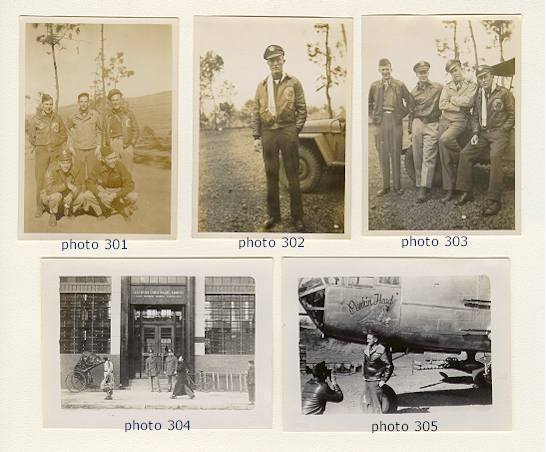Returns Back Home Page 2
Page 2
 Forward Into the Past
Forward Into the Past

|
All photos courtesy of Lt. R. Leech, Official Historian of the 11th Bomb Squadron. On 2 June, 1942, the six ships left Allahabad on a secret mission of 15 days duration, the crew members carrying their musette bags. Each ship carried one extra crewman to act as relief during the expected twoweeks' activity. This was to be the first tactical mission of the 11th Bombardment Squadron as a medium outfit. That night saw them at Dinjan, India, the western end of the ferry route across the Hump into China. At 0600 hours the next morning the flights took off for Kunming, China, detouring by way of Lashio, Burma, which was to be the first target. About 45 minutes out, the weather thickened to the point that the ships became separated, but five were able to regroup just before reaching the target. Despite the bad cloud formation a run on the target was made by the five planes at 1500 feet above one of the runways, hitting it squarely. The sixth ship arrived in the target area while the other ships were finishing their runs and made its individual run about 45 seconds later down the other runway, laying a string of five bombs down its middle. Meanwhile, two enemy pursuit, which had started to follow the formation away from the area, now tacked on to this sixth ship. Staff Sergeant James T. Burke, the top gunner, damaged or shot down one of these on its first pass, but the other followed for 30 minutes, making over ten passes. Early during this action the bottomgunner and radio operator, was hit in the back by a hollow nose .27 calihre bullet while manning his lower turret and died shortly after leaving the target. The ship eventually reached Kunming, however. Meanwhile, the other five ships were flying formation through a solid overcast at 10,000 feet when the lead ship crashed into the side of a mountain, No. 2 of the first element and No. 1 of the second element following him in. The other two ships missed the mountain by only a fraction. The crews, for just a moment, were close enough to observe grass and trees through the heavy clouds and saw the flash caused by the others' crashes. |
All photos courtesy of Lt. R. Leech, Official Historian of the 11th Bomb Squadron.